How the Kansas Food Bank is Powering Pantries Across Western Kansas
Inside a quiet warehouse in Finney County, a powerful effort is underway to fight hunger across western Kansas. But unlike a traditional food pantry, this facility isn’t open to the public. Instead, the Kansas Food Bank (KFB) in Garden City serves as a distribution center for partner food pantries and other agencies across 31 western Kansas counties.
Today, one in eight adults and one in six children in western Kansas suffer from food insecurity — a condition defined as not having consistent access to enough food or nutritious food to meet basic needs.
In 2023, the Kansas Food Bank purchased and renovated its Garden City warehouse as part of a nearly $5 million investment that also included racking, cooler and freezer space, and delivery trucks. Now serving as a western hub for the organization’s statewide operations, the facility began deliveries to partner agencies last fall.
In less than a year, the KFB is revolutionizing the way food is distributed across western Kansas — bringing more fresh, nutritious food to underserved areas and streamlining delivery operations across the rest of the state. Together with the Wichita facility, the KFB’s network supports more than 700 partner agencies across 85 of Kansas’ 105 counties.
These agencies — including pantries, soup kitchens, schools, health clinics, and mobile sites — help provide fresh, nutritious food to struggling families, seniors, and children, particularly in the state’s most rural communities, where the need continues to grow each day.
“There’s a lot of need in western Kansas — more than people think,” says Lisa Knoll, who serves as community and donor relations for the KFB in Garden City. “Out here, access matters. And now, with this facility, we can meet people where they are.”
Fighting Hunger Together
Since deliveries began last October, the KFB facility in Garden City has already distributed over 750,000 pounds of food, serving about 2,725 households per month.
Established in response to local economic hardship, the KFB first opened its doors at a warehouse in Wichita in 1984, serving 16 agencies in Sedgwick County at the time. The following year, KFB joined forces with Feeding America, the nation’s largest network of food banks, and began rescuing and redistributing food that would otherwise be discarded by big-box retailers — laying the groundwork for a statewide hunger relief network.
KFB has grown its reach dramatically across the Sunflower State through careful logistics and deep community partnerships. In 2004, KFB launched the Food 4 Kids backpack program to address weekend hunger among schoolchildren. The initiative now serves more than 6,600 children across more than 360 Kansas schools, discreetly sending food home with students each Friday during the school year.
Then, in 2012, the KFB introduced the Bob Box program — endorsed and supported by the late Kansas Senator Bob Dole — to serve food-insecure seniors with dignity and little to no red tape.
“Seniors are proud. They don’t want to ask for help — or talk about income or need,” Knoll says. “So, we said, let’s do Bob Boxes, because seniors in Kansas love Bob Dole!”
Addressing Rural Hunger
In rural areas, food insecurity can be even more acute than in urban areas. Contributing factors include lower wages, limited transportation, and sparse availability of fresh, affordable food.
Nearly 40% of the 31 western Kansas counties (including Scott, Wichita, Greeley, Hamilton, Kearny, Finney, and Gray counties) served by KFB’s warehouse in Garden City are considered food deserts — geographic areas where residents have severely limited access to nutritious food options.
In 2021, to help address access, the KFB launched www.kansasfoodsource.org — the state’s first county-by-county map and database of emergency food resources. And in 2022, KFB became a key partner in the Sunflower Foundation’s Food Is Medicine initiative. Working with federally qualified health clinics, the program helps patients with chronic conditions, like diabetes and hypertension, gain access to healthy food as part of their care.
To support this mission, the Garden City facility is focused on a major goal as it nears its one-year operation milestone: doubling its distribution of fresh produce across western Kansas, where roughly 23,150 Kansans face food insecurity daily.
“One-third of your [food pantry] participants are there because they have high medical or high medication costs,” Knoll says. “If we can push out more produce, we’ll hopefully get people into a better position health-wise.”
Expanding Reach and Impact
Prior to the development of the food bank in Garden City, the KFB team in Wichita would provide monthly deliveries to serve Kansas’ westernmost counties. But routes were stretched thin, capacity for food storage locally was extremely limited, and there was no room to add new partner agencies or reach more people, despite growing need.
“Adding the Garden City facility not only serves our 31 western Kansas counties better, but our Wichita facility is also able to better serve the remaining counties and focus on them more,” Knoll adds.
Conditions like diabetes and high blood pressure are common among adults seeking food assistance, Knoll said, yet many clients leave food pantries with shelf-stable items like mac and cheese or ramen — foods that stretch a budget, but don’t necessarily nourish the body.
“Protein, dairy and produce — those are the first things cut when families have to make the budget work. Those are the items we’re working hardest to provide,” she added.
Fresh Deliveries
Inside the Garden City warehouse, a large 2,100-square-foot walk-in cooler stores up to three semi-loads of fresh produce. Recent shipments include carrots, squash, apples, grapes, and peaches — which is a much better variety than what was available before, according to Knoll.
The facility also boasts a 1,400-square-foot freezer and two full-time truck drivers (with plans to add a third) delivering daily to various locations across the KFB’s 31-county western Kansas footprint. An additional full-time staff member serves as the warehouse manager to coordinate operations at the 19,000-square-foot facility.
Local cold storage for produce has proven transformative — ensuring more fresh produce deliveries.
It’s been a game-changer for volunteers like Kathleen Dowling, who helps run the Greeley County Food Pantry in Tribune.
“When the trucks used to come from Wichita, they’d load the produce the day before, so sometimes it would get damaged. Having the facility in Garden City, we get it a lot fresher now,” she says.
At the small pantry in Tribune, demand fluctuates with the seasons, but the need never disappears.
“The need is always there, no matter what,” Dowling says. “One month we might see fewer families, and the next, it might double. I had a gentleman come in last month and say, ‘I just can’t make it this month.’ He’s a long-time resident who works hard — but he still needed help. We don’t want anyone to be afraid to come and ask for help.”
Saving Food, Serving People
An astonishing 40% of the food distributed by the KFB is rescued from grocery stores like Dillon’s, Walmart, and Sam’s Club. Items nearing expiration are picked up, stored, and redistributed — often the same day.
This system keeps nutritious food out of landfills and into the hands of those who need it most.
“If you’re disabled or older and can’t travel, your local pantry may be your only food source,” Knoll said. “And out here, rural access matters.”
In the wake of federal funding challenges and looming cuts to the Supplemental Nutrition Assistance Program (SNAP), KFB continues to meet rising needs thanks to a robust donor base and community partnerships. Support from large companies, alongside private foundations and local businesses, also supports their mission.
As KFB continues to build capacity at its Garden City warehouse, Knoll says the focus remains the same: supporting families, seniors, and children in need.
“We’re not here to police what people eat,” Knoll says. “We want them to have options — and hope.”
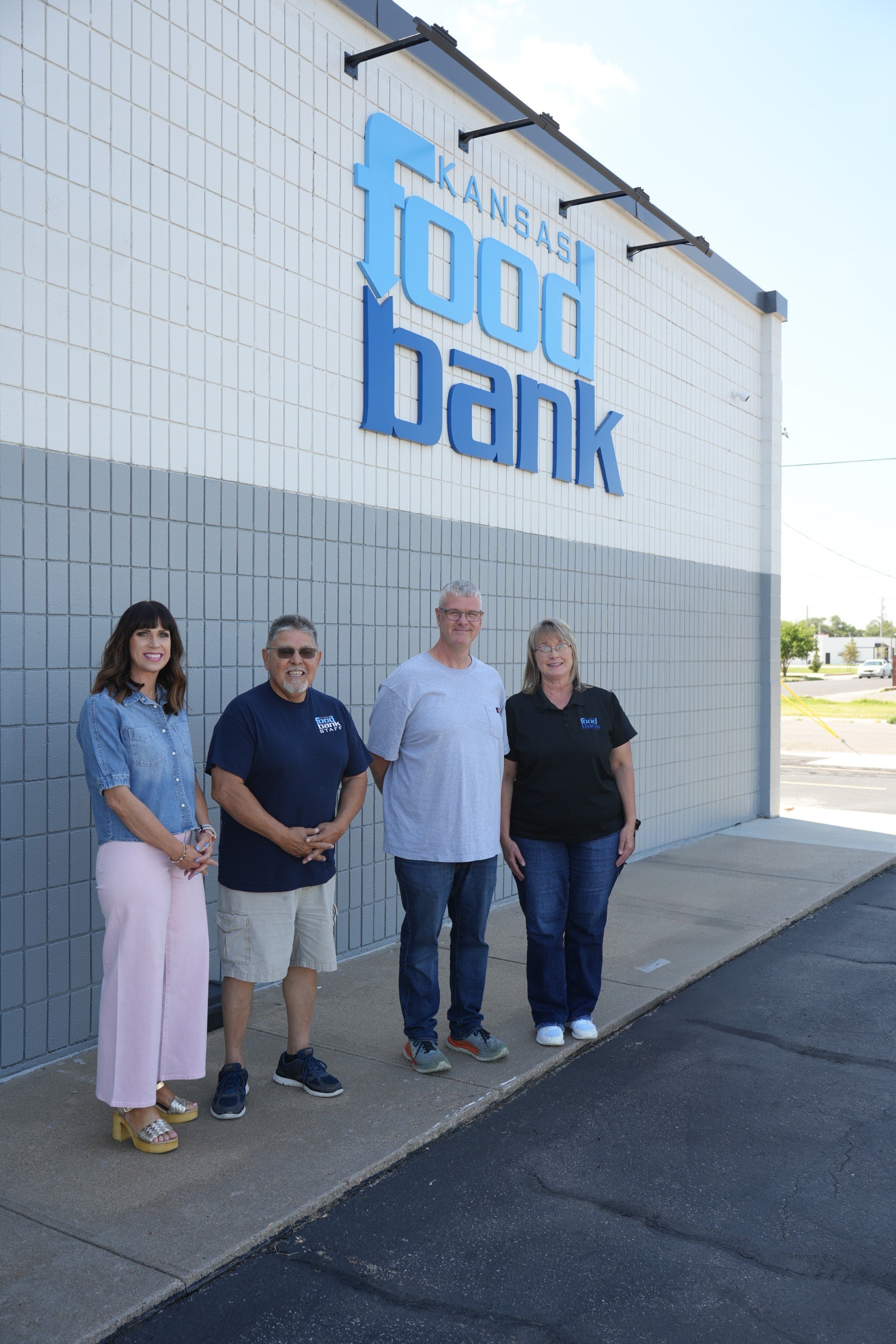
July 7, 2025.
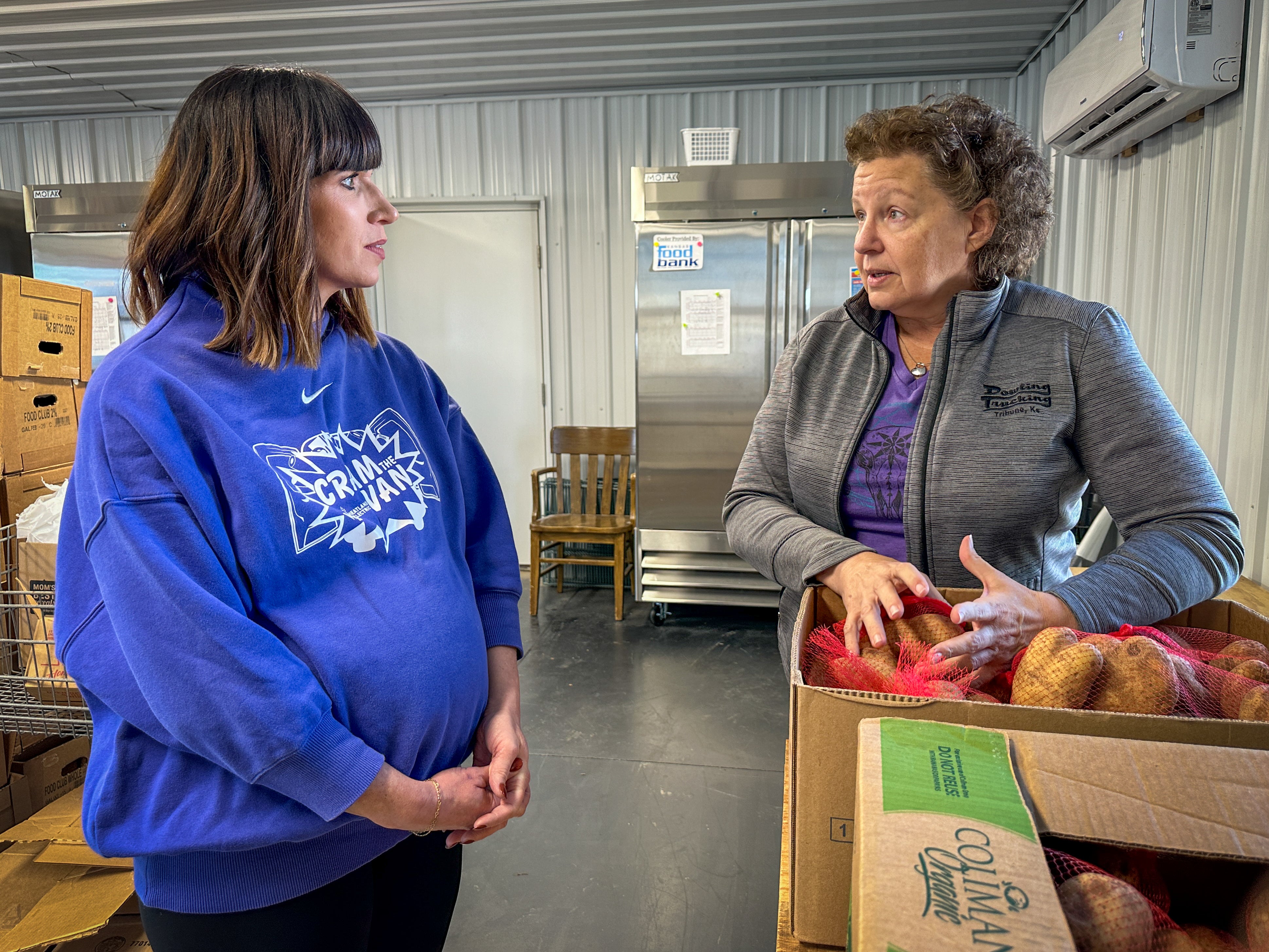
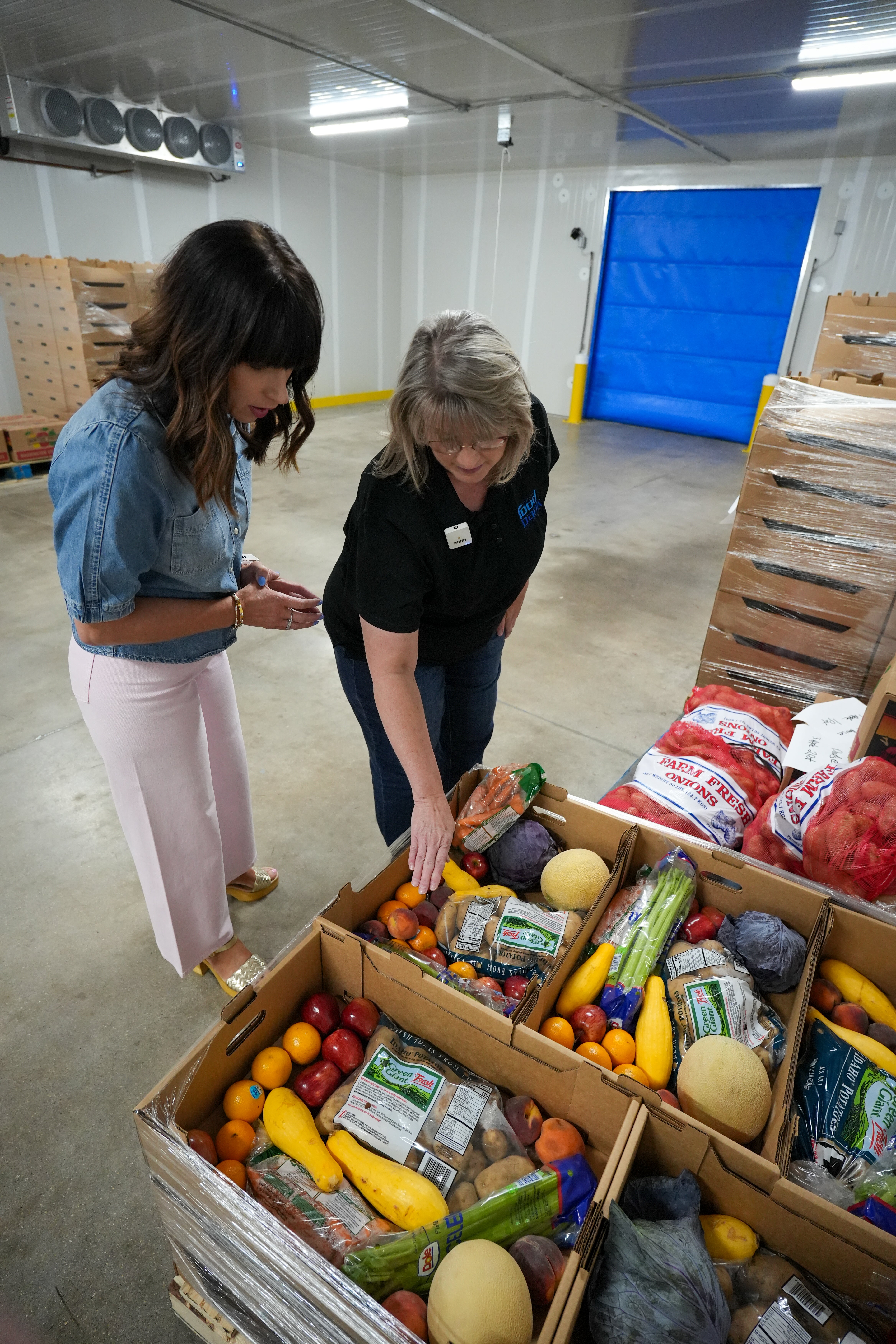
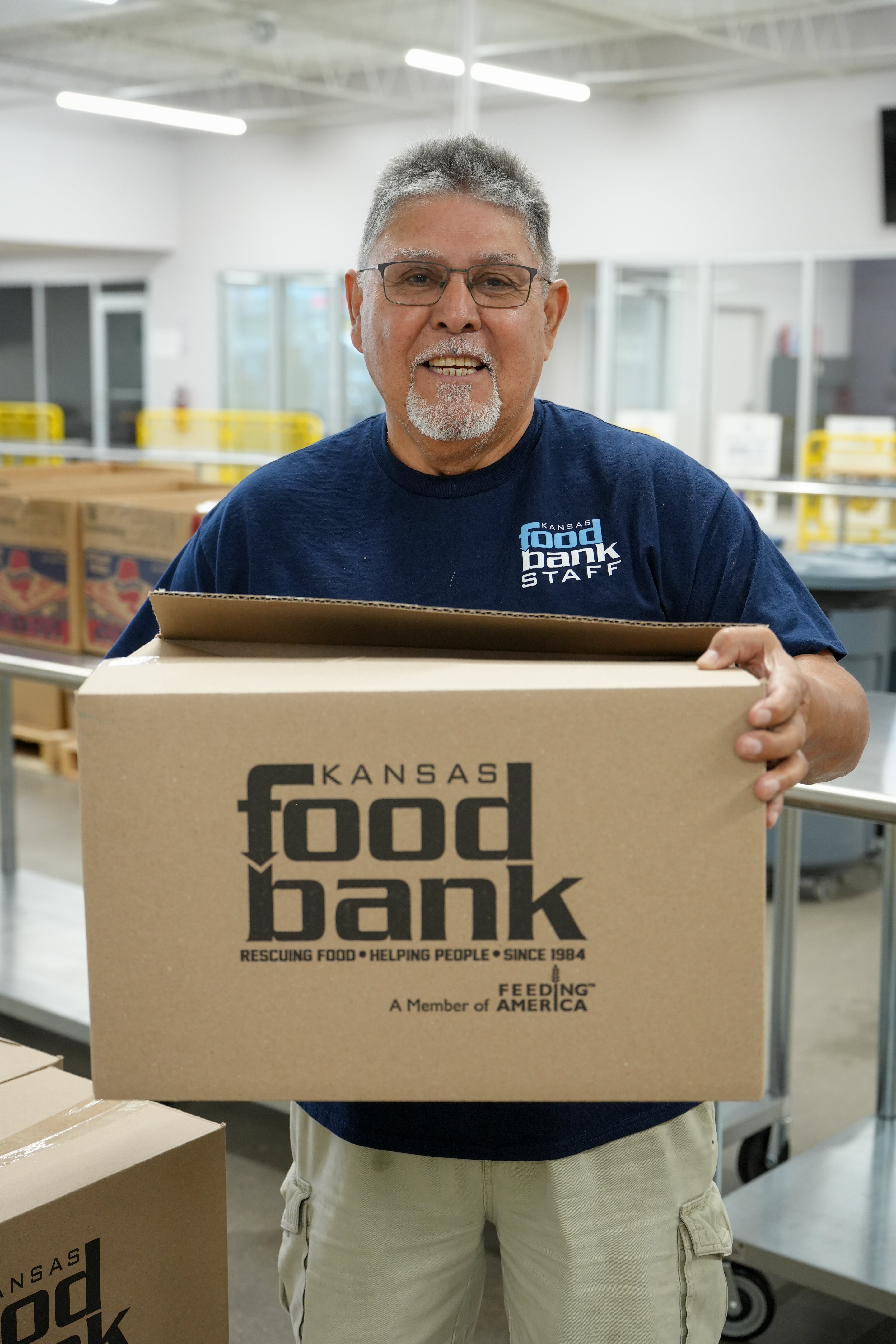
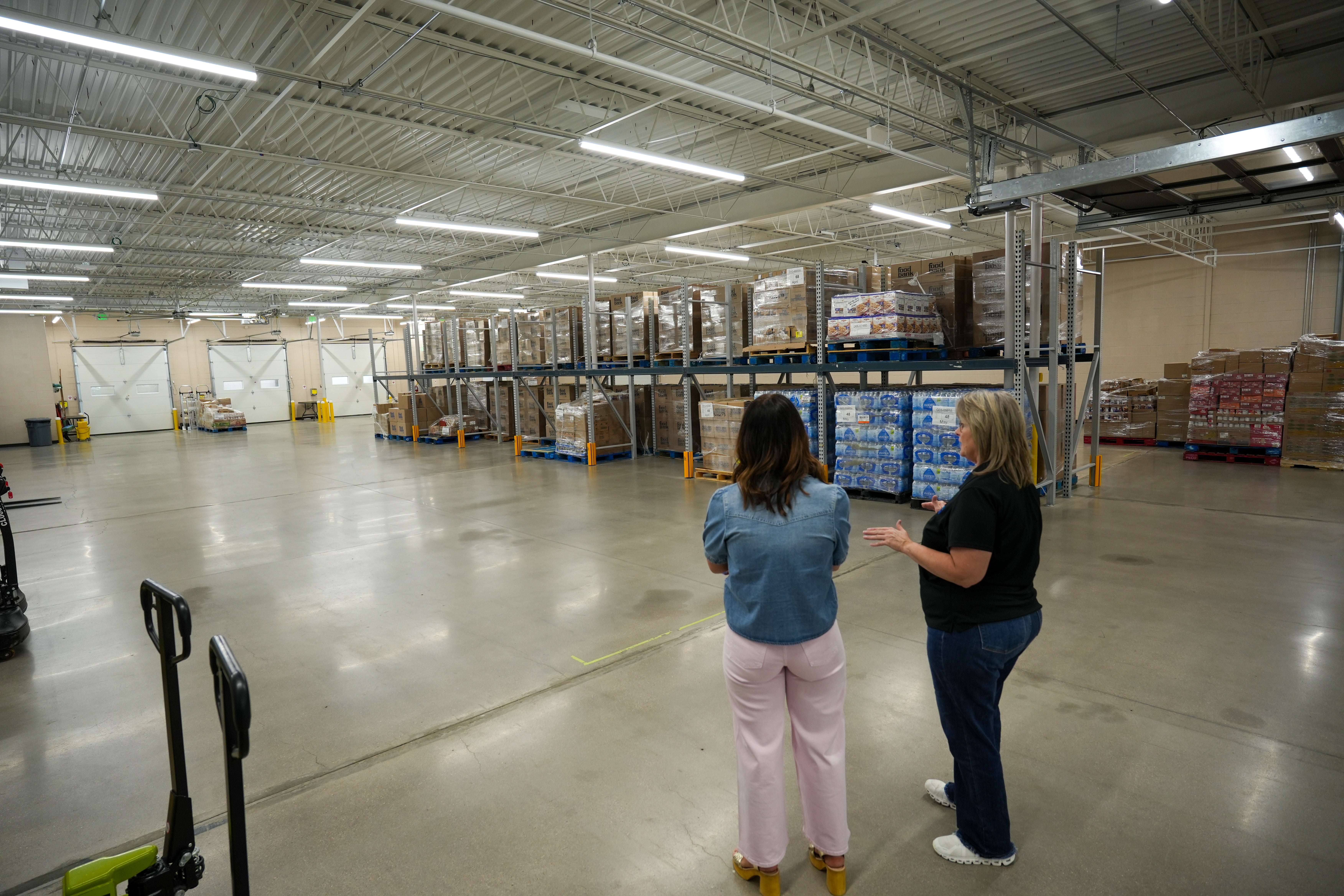
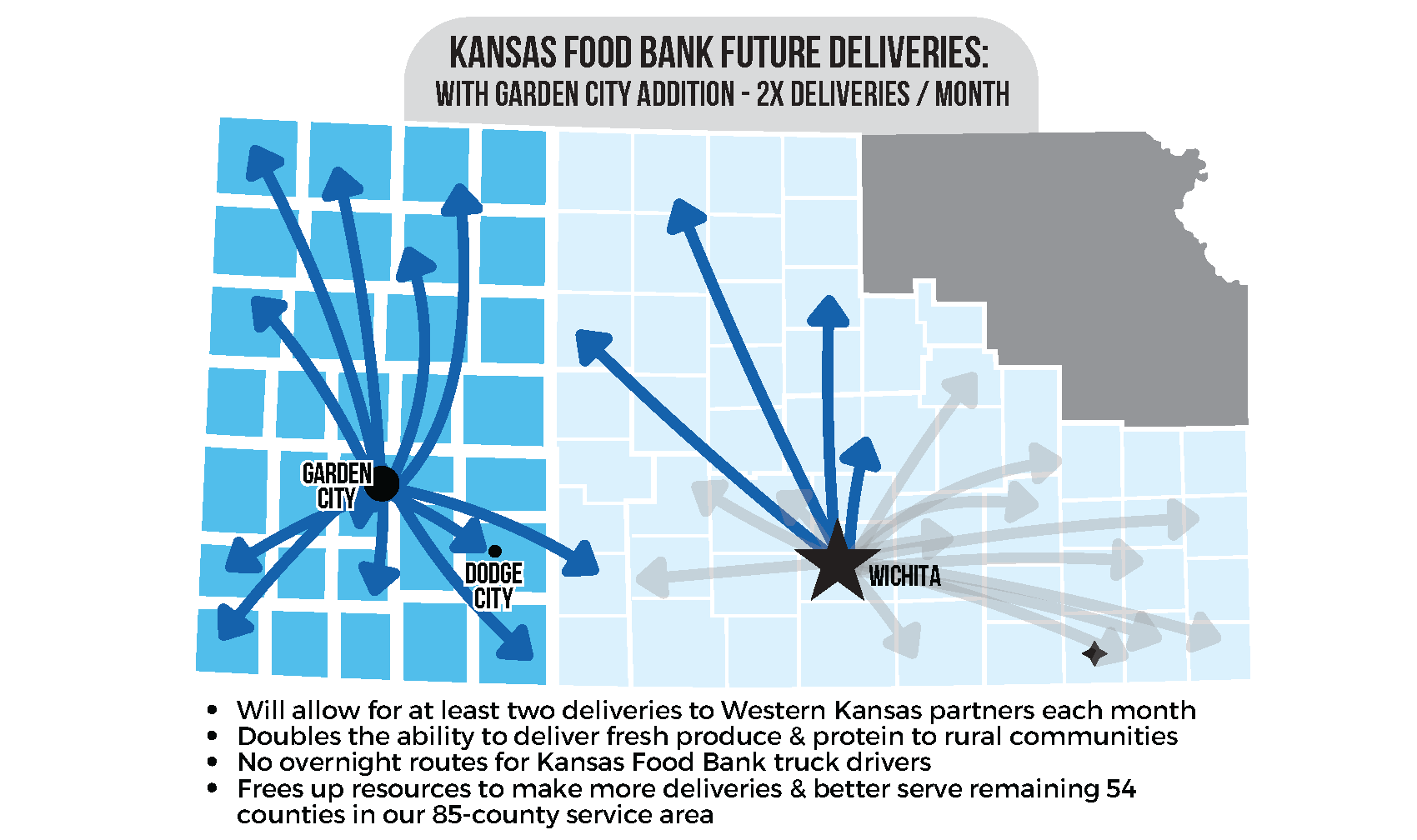
Who Really Relies on Food Assistance?
Food insecurity affects people from all walks of life — not just the jobless or unhoused. Here’s a snapshot of those served by local food pantries across Kansas:
Age Breakdown
-
20% are seniors (60+)
-
35% are children (under 18)
-
45% are adults (19–59)
Demographics
-
85% identify as White
-
9% identify as Hispanic/Latino
-
1% identify as Black
Military Service
-
12% of households include a veteran
Work and Income
-
47% have at least one working adult
-
30% work full-time
-
52% earn $15,000 or less per year
In the past year, families had to choose between:
-
Food and utilities – 42%
-
Food and medical care – 34%
-
Food and housing – 8%

